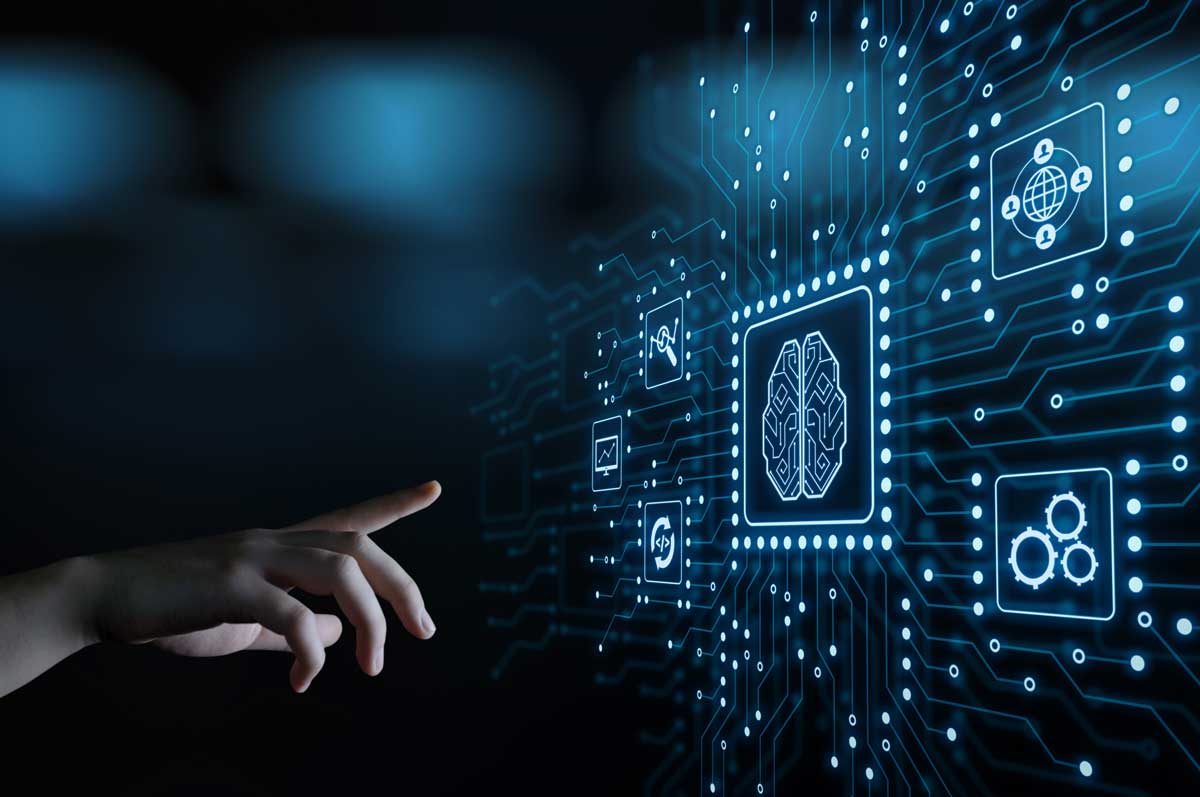Modified: 06-01-2021 Published: 05-18-2021

Artificial intelligence is advancing and covers tasks in a wide variety of industries – including in the world of customs. However, that does not mean that you, as a customs expert, are superfluous. Instead, AI makes your day-to-day work easier. We’ll explain how exactly, using the example of the AI that we use at Grenzlotsen!
An algorithm is a guideline for solving a problem, in which every single step is precisely specified.
We use various algorithms for tariff setting at Grenzlotsen. For example, we create decision trees or differentiate products with a certain customs tariff number from all other products. This makes connections more visible. If you input this algorithm into a product, it makes a four-digit prediction and calculates the probability that this number is actually correct.
The five best predictions are displayed for each product, so that further options are available in case the best prediction is incorrect. This can happen, when products are difficult to differentiate. Here, smallest details can be decisive in ascertaining that they belong to a very specific customs tariff number.
But technical progress now offers something much more advanced than rigid algorithms: artificial intelligence! In order to use the advantages of artificial intelligence at the Grenzlotsen and thus to offer our customers enormous added value, we are now trying to bring them into tariff systems and the world of customs.
Due to ongoing technical development, artificial intelligence and machine learning increasingly belong to our daily lives. But what does this look like and how can you use both?
In short, artificial intelligence (AI) can be defined as an imitation of human intelligence by computer systems. However, artificial intelligence still has its limitations. Machine learning, on the other hand, describes computer systems learning independently.
Think of the Convolutional Neural Network (CNN) as a huge network in which several layers are linked together.
To generate a CNN, two different types of data are required, which, however, hardly differ in terms of content: test data and training data. The only difference is that the CNN knows the training data and is trained with it. The test data is initially unknown to the CNN and is only used for validation.
To start with we have training data with the product name and the respective customs tariff number. Based on the product name, the CNN tries to issue the first four digits of the product’s customs tariff number. The CNN then compares the predicted result with the correct four-digit code. If the predicted result is correct, the CNN remembers the settings within the network and maintains them. If the result is incorrect, the CNN readjusts the the data internally. This can be seen as a learning process. Since the correct result is known to the CNN at the beginning and is monitored by the fact that it is predicted correctly, this type of machine learning is also called supervised learning. The aim of the CNN is to recognize connections between the product name and the customs tariff number and to improve independently.
Using the test data, we then validate how well the CNN works with data that is similar to the training data, but not the same.
The higher the simultaneous accuracy of the training data and the test data, the better. If high level accuracy only occurs with the training data, this means that the CNN has learned this data by heart, but cannot transfer its knowledge to further data sets. This is also called overfitting.
By increasing the amount of different data to train the CNN, predictions of correct tariff numbers become more likely. If you also want to use CNN, however, you have to be aware that it cannot correctly predict completely foreign data.
CNN is only good in the areas it has trained in. Anyone who has previously only classified food and now enters products from vehicle construction in the CNN cannot expect any meaningful results. To accomplish this, the CNN must first be trained with corresponding data sets. The better this database is maintained, the better results the CNN can achieve. It’s like training for a marathon – you don’t run 42 km as fast from the word go, you have to train first.
Our goal is for the CNN to be able to output eight-digit customs tariff numbers or even the full customs tariff number. The problem here is that there are a lot of customs tariff numbers in harmonized systemd, for which the distinction is not made using simple terminology. Small details are often decisive, on favouring of one or the other customs tariff number. It becomes more and more difficult for the CNN to provide correct customs tariff numbers.
This is precisely why it is so important that the CNN is actually used by customs experts. Dealing with customs tariff numbers requires a certain amount of experience and sensitivity. Only experts can validate whether predicted customs tariff numbers are correct and provide corresponding comments and explanations, enabling the system to learn further.
Thus, the artificial intelligence should not replace customs experts, but work with them, to simplify work and make it more efficient, with suggestions of four-digit numbers. This enables customs experts to realize in which direction they have to rate tariffs faster, simplifying their daily work significantly.